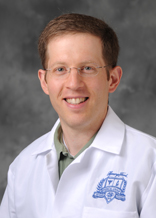Program Information
Fear Not the Y-90 Surgical Staff Dose
M Vanderhoek1*, S McKenney1 , S Huang2 , B Harkness1 , (1) Henry Ford Health System, Detroit, MI, (2) University of California San Francisco, San Francisco, CA
Presentations
TH-AB-BRA-11 (Thursday, July 16, 2015) 7:30 AM - 9:30 AM Room: Ballroom A
Purpose: Patients with hepatic malignancies treated with ⁹⁰Y-microsphere brachytherapy are often precluded from liver transplantation for 4-weeks (~10 half-lives) following therapy. This delay protects surgical staff from potential radiation dose but negatively impacts patients who could benefit from early transplantation post-therapy. We investigated the potential radiation dose to surgical staff performing early liver transplantation.
Methods: Measured data from 30 treated patients were used to determine an average liver ⁹⁰Y-radioactivity concentration (Cavg= 60 μCi/cm³) and average maximum patient surface exposure rate (Ravg_max = 5.9 mR/h). Beta and bremsstrahlung dose rates at the liver surface were calculated from Cavg and Ravg_max respectively. These surface dose rates were compared with Monte Carlo (Geant4) simulated dose rates for a voxelized 1600 cm³ liver (Cliver = Cavg) containing a 5 cm diameter tumor (Ctumor = 3Cavg). The radiation dose to the hands of a transplant surgeon (Dhand) handling a radioactive liver for 2-hours was estimated using the calculated and Monte Carlo derived liver surface dose rates. Dhand was determined at different time-points post ⁹⁰Y-therapy.
Results: Transplantation performed at 1-day and at 1-week post ⁹⁰Y-therapy resulted in Dhand<100 mSv and Dhand<20 mSv, respectively. At 1-week post-therapy, Dhand was less than 5% of the annual occupational dose limit to the hand (500 mSv). Calculated Dhand and Monte Carlo derived Dhand agreed within 20%. At the liver surface, bremsstrahlung dose rates were less than 1% of beta dose rates. Location of the liver tumor did not have a significant effect on Dhand.
Conclusion: Potential radiation dose to surgical staff is low (<5% of annual limit) when performing liver transplantation in patients as early as 1-week after ⁹⁰Y microsphere brachytherapy. Future work aims to improve dosimetry by incorporating patient specific imaging data of the ⁹⁰Y radioactivity distribution and by measuring dose to surgical staff via ring and body dosimeters.
Contact Email:


